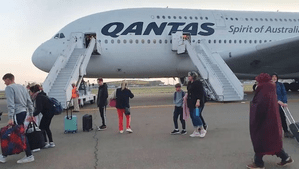
Sydney Airport records 6.4 per cent rise in passenger traffic
Sydney, July 23 – Australia’s Sydney Airport has seen 9.7 million travelers passing through its terminals in the second quarter (Q2) of this year, representing a 6.4-per cent increase from the same period last year, but still falling short of its pre-Covid levels.
Released on Tuesday, the latest report suggested that 3.8 million passengers traveled through the international terminal in the second quarter, rising 12.1 per cent year-on-year and reaching a 94.3-percent recovery rate compared to Q2 2019.
Domestic and regional traffic rose 3 percent from the same period last year, with 6 million passengers coming through the domestic terminals. It also marked a 90.5-percent recovery rate on Q2 2019.
According to Sydney Airport Chief Executive Officer Scott Charlton, the seat capacity growth across the markets of Japan, South Korea, Thailand, and Vietnam led to strong international passenger volumes.
“This was underpinned by increased frequencies including Thai Airways adding a second daily service to Bangkok, Jetstar putting on a new, three-weekly service to Osaka and VietJet Air adding a twice-weekly service to Hanoi,” he said, Xinhua news agency reported.
As for the domestic front, Charlton touched upon “a lag relative to international” with higher airfares, a lack of capacity, and a downturn in discretionary business travel affecting demand.
Charlton revealed that the airport is focusing on the government’s implementation of the Harris Review Recommendations to optimize its reliability and passenger service.
“Airservices Australia had a ‘ground delay protocol’ in place due to weather on 41 out of 91 days during Q2. We know that on each day we are on ground delay, we see on average a 21-percent increase in cancellations. Over time, that adds up to a lot of canceled flights that could have potentially been avoided with a recovery mechanism,” said Charlton.
“Last Friday’s global technology outage is another good example. It took some airlines a number of days to recover their schedules, and perhaps the impact wouldn’t have been as severe with a recovery mechanism, which is why we are looking forward to working with the government to implement it as soon as possible,” he added.